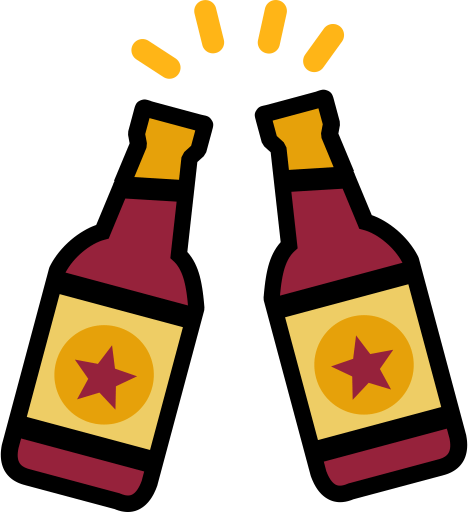In the past, I only ever did top fermenting styles. I had to depressurise my bottles sometimes even more than once (using swing top bottles, luckily, this is not too awful). Now I made a Vienna Lager and even though I can‘t even really cold crash the bottles (I have them sit outside at maybe 10°C instead due to a lack in fridge space), my secondary fermentation is way slower than I’m used to. Is that to be expected?
With ales, I opened the bottles the day after starting secondary, and it sometimes was a deafening bang already. Now, I waited maybe even two days and haven‘t got more than a shy little pop.
I used powdered sugar (mixed with sterile water 1:1) to feed the yeast in secondary fermentation because I didn‘t have anything else in the house when I found the time to bottle. Is that maybe an issue?


Lager styles usually take longer in secondary leave it at least week to pressurize.
Which yeasts did you use?
Classic: W-34/70 lager yeast. I waited quite some time though to assure primary fermentation was really over in order not to burst any bottles. So it’s also entirely possible that there is just very little yeast in the individual bottles to get secondary fermentation going.
Can’t wait to start kegging…
I brewed in about the same style but mainly with S-185. If you measure gravity during fermentation you can put it in bottles with ~4,5°Bx and skipp adding sugar.
It is enough to pressurize it and fermentation isn’t completely stopped (it is just slowing down). After week in 10 - 12°C it should be pressurized.
When I miss this window I add only about 3.5 g of sugar per bottle and 30g per 30l keg.
I’m not convinced the particular yeast strains make that much of a difference here. How did you measure your gravity though, what tool did you use & did you correct for alcohol? 4.5° is somewhere between my corrected and uncorrected readings. For the last three days, I read 5,9°Bx / 1.024 g with a refractometer, which Brewfather converted to 2.3° Bx / 1.009 final gravity when taking the fermentation into account. Your way, I’d have had to start secondary fermentation way earlier to leave some sugar behind. Doesn’t sound like a bad idea though, saves just another bit of work and only needs me to get the timing right (and have reliable measurements of course).
I use hydrometer it gives you real gravity but you need more beer.
But when you calculate real gravity from refractometer you can use it.
The window for this method is from 4-4.5°Bx and I only used hydrometer so it may need little bit of trying to not get bombs.
Now I work in brewery and we use basically the same method, but because the tank caps work as regulated pressure relief valves, they are cooled… It is just more regulated and done before packaging (bottling and kegging).
Doesn’t alcohol lower the density of the liquid, so that a hydrometer reading should have to be corrected as well to some degree? You sure now better than I do, but that was my impression.
Other than that, do you have a source for the numbers you mentioned? Something were I can go look stuff up myself, e.g. when I’m about to brew something very different?
Tldr of this measurement is that density is affected only negligibly (with low concentration of alcohol). Refractive index changes a lot.
These numbers were “discovered” by trying, maybe from some 15 yo Czech seminar my dad attended when he started. I just know that it works.
For sugar I am adding the least amount possible- it has some already ~3.5 °Bx and I don’t want bombs.